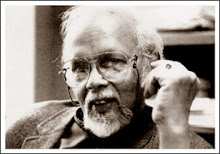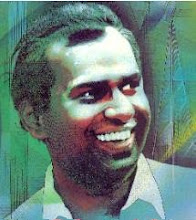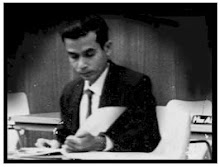The Sri Lankan Sinhala theatre had a new pulse when Prof. Ediriweera Sarachchandra staged the Buddhist legend of Maname in 1956. Maname set the trend, but Sarachchandra's pinnacle - many observe - is Sinhabahu, a legend on the Sinhala race's origin. 
Many decades went by before Sinhabahu came out in English; Dr. Lakshmi de Silva the first translator, and Namel Weeramuni the second. They have their own stories to share, but this is not about the translations at all.
The legend was first introduced in modern form. It was then introduced to English readers. And now thirdly, the English version comes on stage with a local cast.
Simply put, Mayashakthi Theatre Foundation's Dharmajith Punarjeeva will stage the English production of Sinhabahu on March 15th and 16th at Lionel Wendt at 6.30. Punarjeeva's work is based on Dr. Lakshmi de Silva's translation. 
"I would have really loved to take Namel Weeramuni's script also. But he has already done a production. So I settled on Dr. de Silva's script. She was so kind enough to give permission to make use of her book."
What's special about Punarjeeva's production is that it has a local cast. He has positive words on the cast's ability of dancing and acting. The capability to dance and act well, Punarjeeva says, is something hardly present in Sri Lankan English theatre.
| |
"English theatre players mainly learn English rather than performing. But we have students who have studied dancing and acting as a subject."
Punarjeeva also shows gratitude to late Professor's wife Lalitha Sarachchandra. "She was so helpful to us and keen to leave Dr. Sarachchandra's name for posterity. A legal agreement took place between Mayashakthi Theatre Foundation and Sarachchandra Theatre Foundation as a result."
Prof. Sarachchandra set his mark on Sinhala theatre, and so did Prof. Ashley Halpe to the Sri Lankan English theatre.
"Sri Lanka's English theatre has a long history. It has been present since 1930s. What Prof. Halpe did was that he added more stage plays and thus he should be considered a pioneer in Sri Lankan English theatre." 
However English theatre in Sri Lanka has no vision, Punarjeeva laments. It was always either a translation or an adaptation. William Shakespeare or Harold Pinter or any other playwrights are so good to see in local English theatre. But we also have a tradition, an oriental tradition.
No major Sri Lankan English playwright has ever used a local script, so obviously the Sri Lankan English theatre has no oriental vision. There are good original plays by Sarachchandra and Sugathapala de Silva. But translators are wary of even touching them.
"Prof. Halpe and Dr. Lakshmi de Silva should be specially commended for their translations of Sinhala masterpieces like Viragaya and Madol Doova, by the likes of Martin Wickramasinghe and Sarachchandra. We can show these works to foreigners without any second thoughts." 
Punarjeeva's purpose is to bring national identity with the Sinhabahu stage play. "There are original English plays written by locals too.
But we took this translation actually because it has a local touch. It is about the origin of the Sinhala race. We have this question of national identity, when we are presenting something."
Punarjeeva related something similar happened to C. de S. Kulathilake, a late musician.
When Kulathilaka was asked to play local music in England, what he could play was of Indian type. From then Kulathilake set out to study local music.
"The local music has its roots in folk music. Our peasant ancestors used to recite folk poems mainly to ease their sadness and loneliness."
Sarachchandra did it too. He worked with Europeans initially, but he took to working on folk theatre later on.
Punarjeeva's Mayashakthi Theatre Foundation was formed in 1990 with the object of encouraging local performers and audiences more insightful to original and creative theatre. Based in the crowded city of Nugegoda, the foundation conducts workshops for other young enthusiasts in various regions of the island in order to introduce them to theatre.
Mayashakthi publishes magazines, annual journals, newspapers and books dedicated to furthering the arts in Sri Lanka.
"Our theatre periodical is Kasaya (whip). It has all critical and analytical articles on artistes as well as arts. Our other publications are Shakespeare, Gandhi and Roma."
Mayashakthi performances are at the apex of the alternative tradition in the performing arts. The open economy policies of the 1980s had the unfortunate effect of upending the traditions of performing arts existing at the time, with a wave of inferior, puerile, popular productions invading the stage.
"These were juvenile, commercialised productions devoid of a serious foundation. We opposed and countered these trends with our productions."
And finally, Dharmajith Punarjeeva invites us to be a part of Sarachchandra's legacy - Sinhabahu - on March 15th and 16th at Lionel Wendt.





































No comments:
Post a Comment